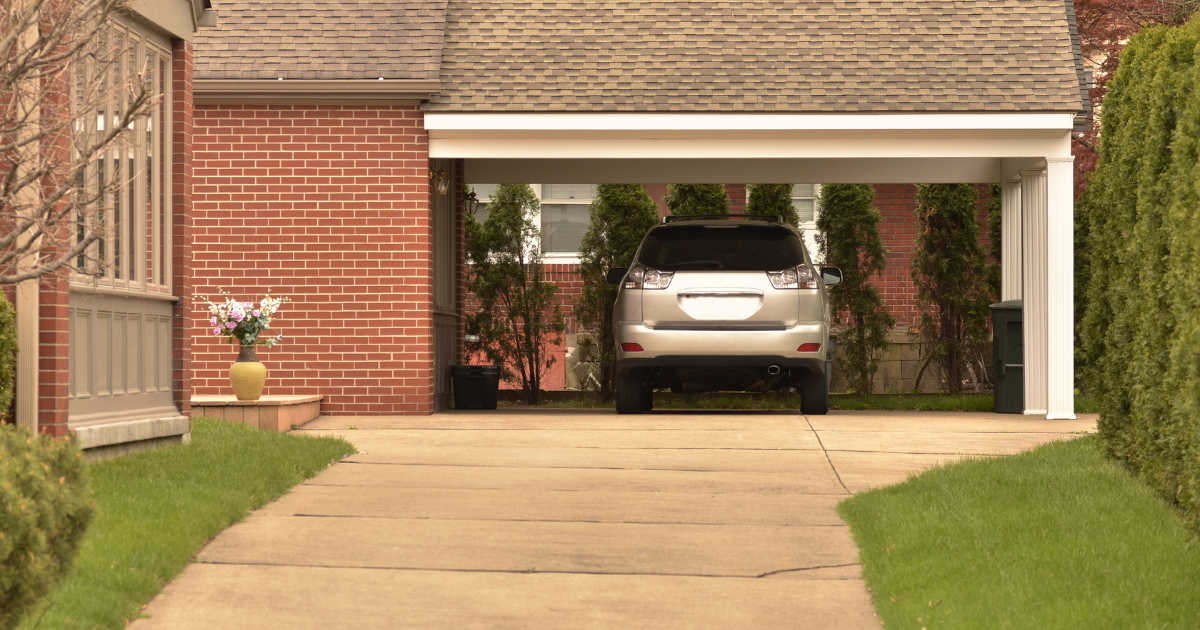How to get Oil Stains out of the Driveway

In this article I will show you how to get oil stains out of the driveway. Oil stains on your driveway can be a real eyesore. Whether it’s from a leaky car or a DIY mechanic mishap, these unsightly blemishes can make your once-pristine driveway look neglected. But fear not, because in this guide, we’re going to walk you through 10 effective methods to bid those oil stains adieu and restore your driveway to its former glory.
Introduction
Your driveway is the welcome mat to your home, and it’s disheartening to see it marred by stubborn oil stains. Fortunately, there are several methods you can try to remove these blemishes. The success of each method may vary depending on the age and severity of the stain, so it’s essential to be patient and persistent. Let’s dive into the top 10 methods for oil stain removal.
1. Cat Litter or Cornstarch
For fresh oil stains, start with this simple method:
– **Step 1:** Cover the affected area with a generous layer of cat litter or cornstarch to absorb the oil. Make sure it’s entirely covered.
– **Step 2:** Let it sit for at least 24 hours, allowing the absorbent material to work its magic.
– **Step 3:** After waiting, sweep or scoop up the litter or cornstarch.
– **Step 4:** If the stain persists, repeat the process until the oil is entirely gone.
2. Dish Soap and Water
If the oil stain isn’t entirely fresh but not too stubborn, this method may work:
– **Step 1:** Mix a solution of dish soap and hot water. You can use a dishwashing detergent like Dawn, which is known for its grease-fighting properties.
– **Step 2:** Pour the soapy solution over the stain.
– **Step 3:** Scrub the stain vigorously with a stiff brush or broom. The abrasive action, combined with the soap, should help break down the oil.
– **Step 4:** Rinse the area thoroughly with water.
– **Step 5:** Repeat the process if necessary.
3. Commercial Oil Stain Removers
Commercial oil stain removers are specifically designed for this task and can be quite effective. Follow the instructions on the product’s label for the best results. Most of these products will require you to:
– **Step 1:** Apply the product to the stain as directed.
– **Step 2:** Let it sit for the recommended duration.
– **Step 3:** Scrub the area gently with a brush or broom.
– **Step 4:** Rinse thoroughly with water.
– **Step 5:** If the stain persists, reapply the product and repeat the process.
4. Baking Soda and Vinegar
This method is excellent for those who prefer natural remedies:
– **Step 1:** Sprinkle a generous amount of baking soda over the oil stain.
– **Step 2:** Pour white vinegar onto the baking soda. This will cause a fizzing reaction, which helps break down the oil.
– **Step 3:** Let the mixture sit for a few minutes.
– **Step 4:** Scrub the area with a brush to lift the stain.
– **Step 5:** Rinse the area thoroughly with water.
5. Pressure Washing
Pressure washing is a powerful tool for oil stain removal, particularly for older and stubborn stains. Follow these steps:
– **Step 1:** Rent or use a pressure washer. Be sure to choose the right nozzle to avoid damaging your driveway.
– **Step 2:** Hold the pressure washer nozzle close to the stain and use high-pressure water to dislodge the oil.
– **Step 3:** Keep a safe distance to prevent damage to the surface. Move the nozzle gradually closer if needed.
– **Step 4:** After cleaning the stain, rinse the entire driveway to ensure an even appearance.
– **Step 5:** Be cautious and follow the manufacturer’s instructions for your pressure washer.
6. Biological Stain Removers
For those concerned about the environment, some products contain live bacteria that naturally digest oil over time. The process usually involves:
– **Step 1:** Apply the biological stain remover as directed on the oil stain.
– **Step 2:** Allow the bacteria to work over a few days or weeks, depending on the severity of the stain.
– **Step 3:** Keep the area moist during this period by occasionally spraying it with water.
– **Step 4:** Scrub the area gently with a brush and rinse it with water.
7. Kitty Litter and Mineral Spirits
When faced with a persistent stain, combining kitty litter and mineral spirits can be effective:
– **Step 1:** Cover the oil stain with an absorbent material like kitty litter or sawdust.
– **Step 2:** Drizzle mineral spirits over the stain.
– **Step 3:** Scrub the area with a brush.
– **Step 4:** Rinse the area with water.
8. Hydrogen Peroxide and Baking Soda
This method combines the cleaning power of hydrogen peroxide and baking soda:
– **Step 1:** Mix baking soda and hydrogen peroxide to form a paste.
– **Step 2:** Apply this paste to the oil stain.
– **Step 3:** Scrub the area with a brush.
– **Step 4:** Rinse with water.
9. Clay-Based Absorbents
Clay-based absorbents designed for oil stain removal can be effective. Here’s how to use them:
– **Step 1:** Apply the clay-based absorbent to the stain.
– **Step 2:** Let it sit for the recommended duration, usually 24 hours.
– **Step 3:** Sweep or scoop away the absorbent material.
– **Step 4:** Rinse the area with water.
10. Sand Blasting
For stubborn, old stains that just won’t budge, sand blasting or grinding the surface may be the last resort. However, this should be done with caution, as it can damage the appearance of the driveway. It’s recommended to hire a professional for this job.
Additional Tips and Advice
- **Prevention:** The best way to deal with oil stains is to prevent them. Regularly inspect your vehicles for leaks, and use drip pans or cardboard under your car if you suspect an issue.
- **Quick Action:** The sooner you tackle an oil stain, the easier it is to remove. Fresh stains are generally more responsive to cleaning methods.
- **Protective Gear:** When using chemicals or power tools, ensure you wear gloves and safety goggles to protect yourself.
- **Disposal:** Check local regulations for the proper disposal of waste materials produced during the cleaning process, especially if you’re using chemicals.
- **Test an Inconspicuous Area:** Before applying any cleaning method, test it on a small, inconspicuous area of your driveway to ensure it doesn’t cause further damage or discoloration.
- **Maintenance:** After removing the stain, consider sealing your driveway to provide an added layer of protection against future stains and damage.
In conclusion, don’t let oil stains tarnish the beauty of your driveway. With these 10 methods and a little patience, you can successfully bid farewell to those stubborn oil stains. Remember to wear protective gear such as gloves and safety goggles when using chemicals or power tools, and follow the manufacturer’s instructions for any products you use. Additionally, check local regulations for proper disposal of any waste materials produced during the cleaning process, especially if you’re using chemicals.
